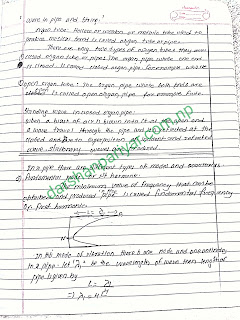waves and strings| complete notes| class 12|NEB|
Waves and strings are fundamental concepts in physics that describe the motion of energy and matter. Waves can be described as the propagation of disturbances through a medium, which can be a physical substance or space itself. Strings, on the other hand, are physical objects that can vibrate and create waves.
The behavior of waves and strings can be described mathematically using a number of formulas. Some of the most important formulas in this area of physics include:
Wave equation: The wave equation describes the motion of a wave through a medium. It is given by:
∂²u/∂t² = c²∇²u
where u is the wave function, t is time, ∇² is the Laplacian operator, and c is the speed of the wave.
Speed of a wave: The speed of a wave can be calculated using the formula:
v = fλ
where v is the speed of the wave, f is the frequency of the wave, and λ is the wavelength of the wave.
Energy of a wave: The energy of a wave can be calculated using the formula:
E = hf
where E is the energy of the wave, h is Planck's constant, and f is the frequency of the wave.
String frequency: The frequency of a vibrating string can be calculated using the formula:
f = (1/2L)√(T/μ)
where f is the frequency, L is the length of the string, T is the tension in the string, and μ is the mass per unit length of the string.
Standing wave frequency: The frequency of a standing wave on a string can be calculated using the formula:
f_n = (n/2L)√(T/μ)
where f_n is the frequency of the nth harmonic, n is the harmonic number, L is the length of the string, T is the tension in the string, and μ is the mass per unit length of the string.
These are just a few of the many formulas used to describe the behavior of waves and strings in physics.
leave a comment.




















